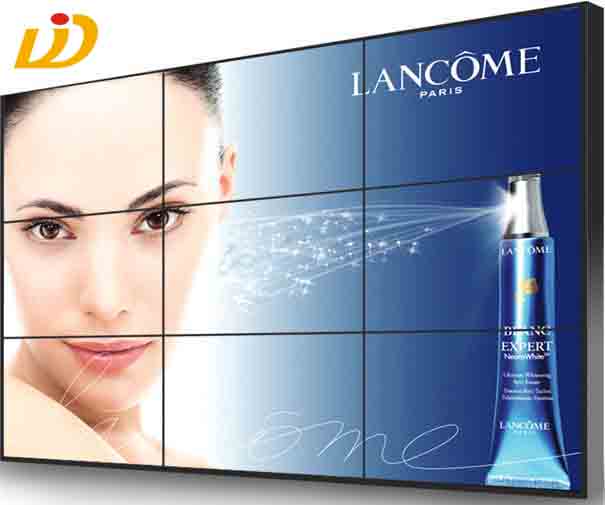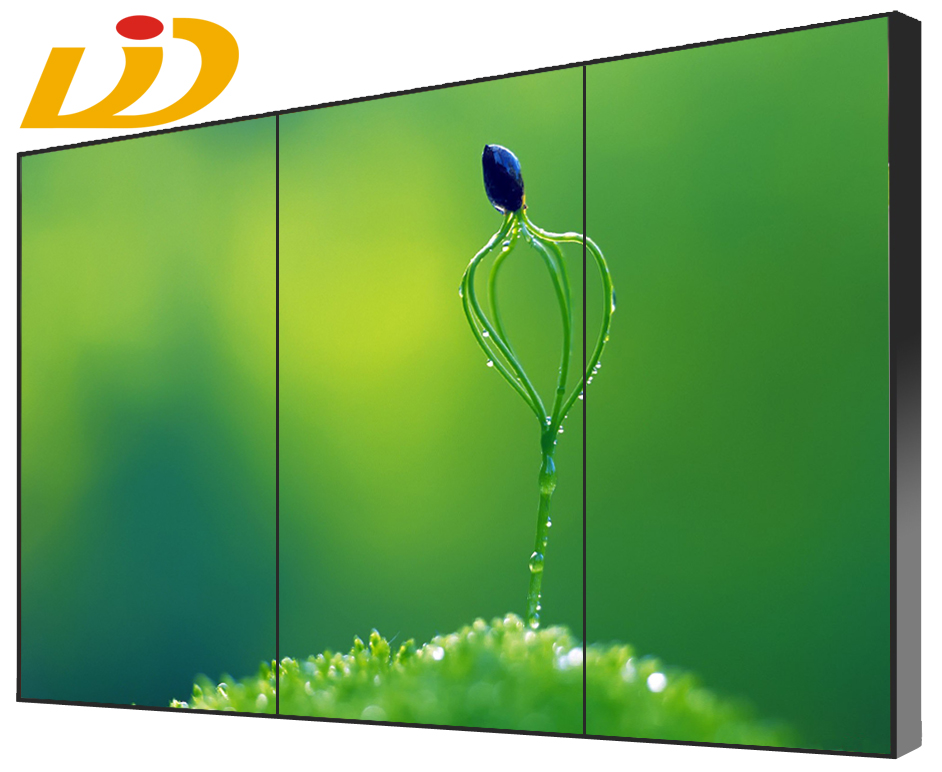People in the purchase of LCD splicing screen, used by users or businesses will certainly recommend to you what they think is a good product, such as our LCD splicing products are very thin body, low power consumption, no color and so on. But is the advantage they enjoy?

Is the LCD screen really thinner?
Relevant studies have shown that the thickness of the spliced ​​large screen is reduced by 20%, and its response speed will be increased by 35% on the original basis. So does this mean that the thinner the LCD splicing products, the better? The answer is of course no, because the thinning of the product will also have a negative impact. Users must understand before purchasing.
The thinner the product thickness, the higher the requirement for the manufacturing process. If the production process is not closed, not only the color of the screen display will be dimmed, but also the viewing angle will be smaller. At the same time, the probability of occurrence of bad spots on the screen will increase. , And the product yield will be reduced. So far, the industry does not have a very sophisticated technology to solve the above problems. Therefore, to produce thin and light products, the production cost of the manufacturers will increase a lot; wool will be transferred to the sheep and, correspondingly, transferred to the users of the industry. The cost will also increase substantially.
There will be no temperature limit for the application of the two LCD splicing screens?
If you want to ensure the efficient application of LCD splicing screen, the ambient temperature is a factor that cannot be ignored. In general, the best use temperature of the LCD splicing screen is between 0 and 40 degrees Celsius because the thermotropic liquid crystal used in the LCD screen is derived from the temperature change and its photoelectric effect is controlled by the temperature if the temperature is not in its Within the use temperature range, it is equivalent to getting rid of the electric field control without the photoelectric effect, and various problems will arise. In practical applications, if the application environment temperature conditions are harsh, it is recommended that users install air conditioners and set the temperature between 25 and 26 degrees Celsius to ensure that the LCD video wall is in the best working condition.
Sanhe LCD splicing screen will certainly not appear color difference?
Many well-known, DLP splicing screen will appear color decay after a period of use, that is, color, affect the use of effects. So, LCD splicing screen really does not appear color difference? In fact, not not, but slower. LCD splicing screen will also appear color decay after using for a period of time, and, this attenuation is irreversible, but its attenuation does not happen often, and, for this, many manufacturers have a certain amount of adjustment means, and thus effective Extended service life.

Fourth, the greater the size of the LCD splicing unit, the greater the power consumption will be?
In the current field of LCD splicing, large size and energy saving and environmental protection have become a hot trend. However, for many users in the industry, this has become a helpless choice because of the potential consciousness of many people, large size will bring about large power consumption? This is not the case. . Relevant studies have found that the power consumption of LCD splicing units with different sizes varies little. For example, the mainstream 46-inch, 50-inch, and 60-inch LCD splicing screens on the market consume approximately the same amount of power under the same conditions. Strictly speaking, the power consumption of the liquid crystal splicing screen is determined by the number of liquid crystal splicing units. The more the number, the greater the power consumption of the screen body. Therefore, if the user has a large-size screen application requirements, by selecting a large size The splicing unit to reduce the number of splicing, but will be more energy-efficient. In addition, customers should pay attention to the consideration of their brand, technology, and merchant qualifications when purchasing products. Try to buy the best in the industry.

Is the LCD screen really thinner?
Relevant studies have shown that the thickness of the spliced ​​large screen is reduced by 20%, and its response speed will be increased by 35% on the original basis. So does this mean that the thinner the LCD splicing products, the better? The answer is of course no, because the thinning of the product will also have a negative impact. Users must understand before purchasing.
The thinner the product thickness, the higher the requirement for the manufacturing process. If the production process is not closed, not only the color of the screen display will be dimmed, but also the viewing angle will be smaller. At the same time, the probability of occurrence of bad spots on the screen will increase. , And the product yield will be reduced. So far, the industry does not have a very sophisticated technology to solve the above problems. Therefore, to produce thin and light products, the production cost of the manufacturers will increase a lot; wool will be transferred to the sheep and, correspondingly, transferred to the users of the industry. The cost will also increase substantially.
There will be no temperature limit for the application of the two LCD splicing screens?
If you want to ensure the efficient application of LCD splicing screen, the ambient temperature is a factor that cannot be ignored. In general, the best use temperature of the LCD splicing screen is between 0 and 40 degrees Celsius because the thermotropic liquid crystal used in the LCD screen is derived from the temperature change and its photoelectric effect is controlled by the temperature if the temperature is not in its Within the use temperature range, it is equivalent to getting rid of the electric field control without the photoelectric effect, and various problems will arise. In practical applications, if the application environment temperature conditions are harsh, it is recommended that users install air conditioners and set the temperature between 25 and 26 degrees Celsius to ensure that the LCD video wall is in the best working condition.
Sanhe LCD splicing screen will certainly not appear color difference?
Many well-known, DLP splicing screen will appear color decay after a period of use, that is, color, affect the use of effects. So, LCD splicing screen really does not appear color difference? In fact, not not, but slower. LCD splicing screen will also appear color decay after using for a period of time, and, this attenuation is irreversible, but its attenuation does not happen often, and, for this, many manufacturers have a certain amount of adjustment means, and thus effective Extended service life.

Fourth, the greater the size of the LCD splicing unit, the greater the power consumption will be?
In the current field of LCD splicing, large size and energy saving and environmental protection have become a hot trend. However, for many users in the industry, this has become a helpless choice because of the potential consciousness of many people, large size will bring about large power consumption? This is not the case. . Relevant studies have found that the power consumption of LCD splicing units with different sizes varies little. For example, the mainstream 46-inch, 50-inch, and 60-inch LCD splicing screens on the market consume approximately the same amount of power under the same conditions. Strictly speaking, the power consumption of the liquid crystal splicing screen is determined by the number of liquid crystal splicing units. The more the number, the greater the power consumption of the screen body. Therefore, if the user has a large-size screen application requirements, by selecting a large size The splicing unit to reduce the number of splicing, but will be more energy-efficient. In addition, customers should pay attention to the consideration of their brand, technology, and merchant qualifications when purchasing products. Try to buy the best in the industry.
AWLOP CO.,LTD , https://www.awlop.com
